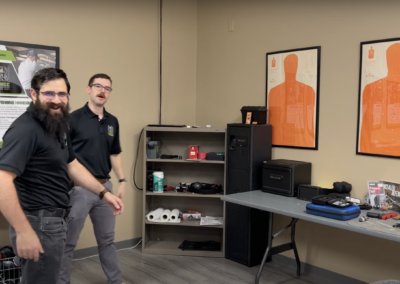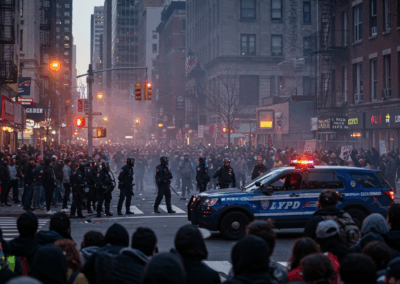
Colorblind Man Helps Me Camo With Spray Paint
VIDEO - Much easier than most assume. A sep by step process on how to spray paint your gun how you like.

Pulling into a gas station at 3:00 am in a neighborhood you’d never visit by choice—the cool dampness in the air clings to everything. You’re driving someone home from a job they hate to a home they dread. Working in the city is something else. What began as a way to earn some extra cash has unexpectedly become an exercise in intimate human connection.
Whether driving for extra cash, working in customer service, or simply encountering strangers in everyday life, these interactions offer more than fleeting exchanges. They serve as constant reminders of the importance of emotional and social intelligence (SEI).
This isn’t just a skill for professionals; it’s a tool for navigating relationships, de-escalating tense situations, and building meaningful connections in all aspects of life. Social and Emotional intelligence is your ability to recognize, understand, and manage emotions in yourself and others.
As a Sentinel, mastering SEI can mean the difference between a tense interaction and a smooth one. It’s about knowing when to speak, when to stay silent, when to engage, and when to let someone vent.
Empathy, the cornerstone of SEI, involves stepping into someone else’s shoes. It doesn’t mean agreeing with bad behavior but understanding where it might come from. That frustrated person in line might have just lost their job. The abrupt stranger could be carrying an unseen burden.
Situational awareness is equally critical. By paying attention to nonverbal cues—posture, tone, eye contact—you can anticipate emotions before they escalate. For instance, a tense stance or clipped words might indicate frustration, giving you the chance to respond calmly and defuse the tension.
But these skills aren’t just useful in moments of conflict; they’re essential for building trust and connection. In an increasingly disconnected world, being present and emotionally tuned in can make all the difference.
Some of the most effective tools for managing difficult situations are surprisingly simple:
Being a sentinel is about more than gear and tools. It’s about embodying readiness—socially, emotionally, and mentally. You may never face a physical threat, but the ability to de-escalate, connect, and adapt is invaluable.
Every interaction becomes an opportunity to practice grace, patience, and understanding. As the golden rule reminds us: “Do unto others as you would have them do unto you.” By applying empathy and respect, you not only defuse tension but also leave others feeling seen and valued.
The challenges of navigating human interaction, whether with a passenger, a stranger, or a loved one, are universal. By practicing emotional and social intelligence, you can transform awkward or tense encounters into opportunities to connect.
The sentinel mindset is more than a toolkit—it’s a way of being. It’s the practice of staying alert, present, and attuned to the needs of others while maintaining your own inner balance. In doing so, you not only protect yourself but also begin to elevate the interactions that define your life.

VIDEO - Much easier than most assume. A sep by step process on how to spray paint your gun how you like.

VIDEO - We got our hands on Mantis's new blackboard in 308. There is lots of fun and training to be had with this thing.

ARTICLE - Light is something we take for granted. A few generations ago, the setting sun meant the end of the day, and fire was our only way to reclaim the night. Now, with a flick of a switch, we summon it instantly—so effortlessly that we rarely stop to appreciate it.

ARTICLE - Civil unrest can erupt with little warning—turning a calm urban outing into a maze of barricades, crowds, and tension. At Gray Sentinel, we emphasize preparedness: from spotting early signs like shifting crowd energy and heavy police presence, to carrying essentials (ID, contacts, power bank), and knowing how to move calmly to safety. Whether sheltering during escalation, interacting with law enforcement, or navigating the aftermath, this comprehensive guide equips you with proactive steps and recovery strategies. Cultivate the clarity and readiness that turn panic into purpose—because in uncertain times, situational awareness is your greatest ally.
0 Comments